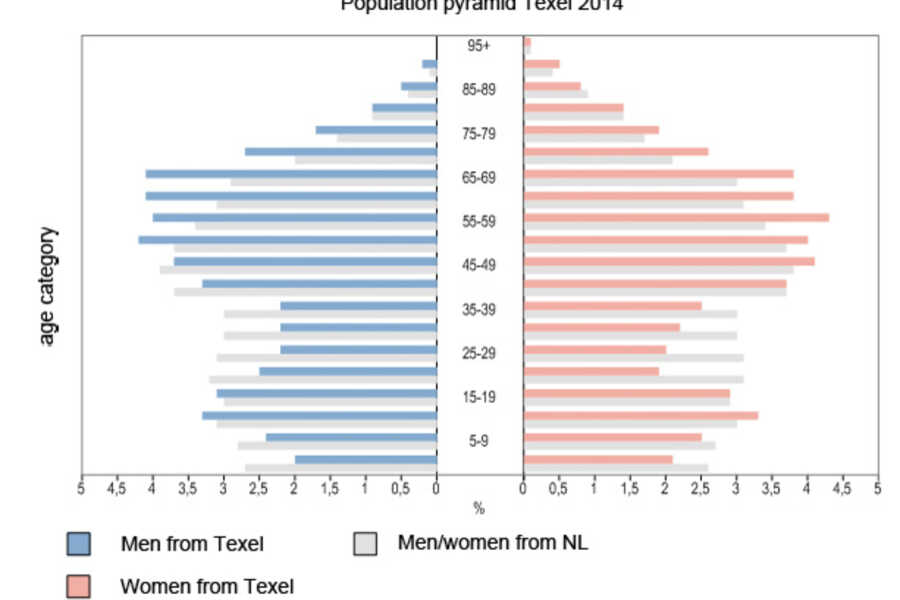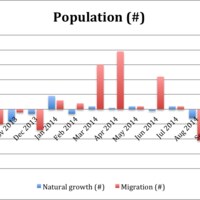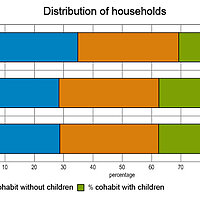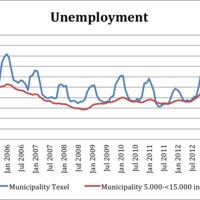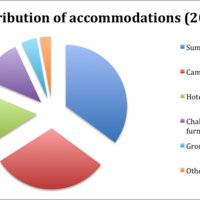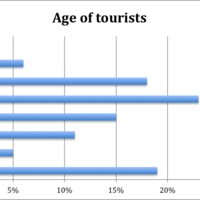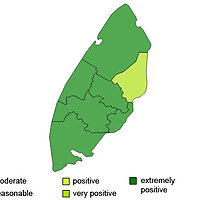Data about Texel
In the following chapter is elaborated on the statistics concerning Texel. The population of Texel and their tourists are analysed and conclusions are drawn for the implementation of a sustainable public space. The question "Who are actors, their problem definitions, needs, interests etc.?" will be answered in this chapter.
Population
Texel has about 13.500 inhabitants. The population of Texel is differing from the population in the Netherlands. The most noticeable fact is the high percentage of inhabitants above 50 years, which is higher for every age group above the 50. This means that there live relatively a lot of elderly people. Another fact that cannot be ignored, are the few people on the island between the 20 and 40 years old. Probably this is related to the opportunities for study and work. The small amount of children between 0 and 10 is probably due to the fact that their parents, the group of people between 20 and 40 years old, are neither living on the island.
The groups that especially should be considered for designing the public space are the elderly people (above 50 years). The group of teenagers should also be taken into account because they are representing the second group of Texel.
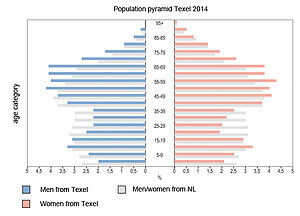
Figure 1: Population of Texelaars (CBS, 2014)
The second graph (Table 1) shows the variation in population during one year. The natural growth and decline is equal to the growth in municipalities with the same characteristics. However, the migration numbers are clearly higher during spring and lower during fall. This has mainly to do with the fact that people who own a summer cottage move during the high season (summer) to Texel.
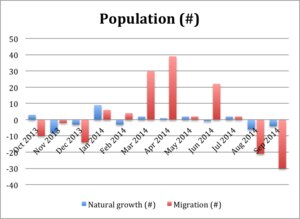
Table 1: Population Texel (CBS, 2014)
The distribution of the households is slightly different compared to similar municipalities. Texel has a slightly higher percentage of single households. The number of cohabits with children is about 8% smaller (Figure 2).
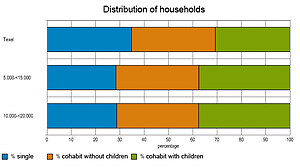
Figure 2: Distribution of households (CBS, 2014)
Unemployment
The unemployment rates (unemployed people looking for work) increases during the winter season. During summer these rates are similar to municipalities with same characteristics. There is a clear sine visible in this graph, which could easily related to the economy that is especially based on tourism and agriculture. What is not mentioned in this graph is the amount of hours working during the season. It is likely that during the summer a lot more working hours are made compared to the winter.
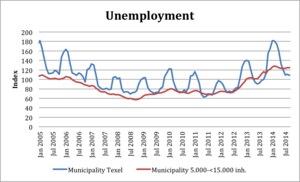
Table 2: Unemployment of Texelaars (CBS, 2014)
Tourism
Every year, approximately 800.000 tourists a year visit Texel (Ecomare, 2014). A lot of them spend the night as well for a couple of days. The average number of nights tourists spend on the island is 4,7 nights, which is decreased compared to 2007. About 44.000 places are available where people can spend their nights. The distribution of these accommodations can be found in Figure 3. In ten years, the number of accommodations increased by 7,8%, especially because of the increase in camping sites. Almost 80% of the visitors already visited the island, so the number of returns is high. (VVV Texel, 2014)
The main motives to visit Texel are (in order of magnitude) (VVV Texel, 2014):
- Visit the beaches
- Walking
- Shopping/visit villages
- Dining
- Nature/visit Slufter
- Rest
- Cycling
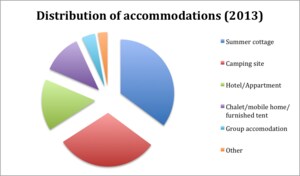
Figure 3: Distribution of accommodations (VVV Texel, 2014)
Figure 4 shows that the largest group of tourists contains especially people from the age group 45-64 years. Teenagers are the second largest age group. About two-thirds of the tourists come from the Netherlands; the other part is represented by people from Germany. (VVV Texel, 2014)
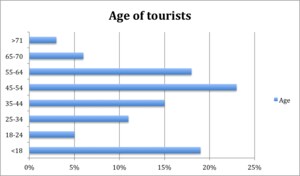
Figure 4: Age of tourists (VVV Texel, 2014)
Liveability barometer
For multiple municipalities in the Netherlands, a 'liveability barometer' (in Dutch: Leefbaarometer) is created. Figure 5 shows the liveability barometer of Texel. Almost all areas score 'extremely positive', except for the area around Oosterend which scores 'very positive'. Public space is an important aspect of this barometer. Examples of public space are:
- Share of dilapidated buildings
- Noise pollution
- View on inland waters
- Value of rental houses
- Green space
- Etc.
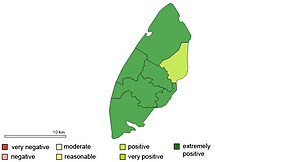
Figure 5: Liveability barometer Texel (Leefbarometer, 2014)
Conclusion
In the conclusion the following question will be answered: "Who are actors, their problem definitions, needs, interests etc.?". The answer is categorized into three sections.
Actors
The largest group of inhabitants on Texel are the elderly people (age 45+). During summer, many tourists (of the same age group) visit the island and use the public space as well. Of all groups, these two age groups will use the public space the most compared to other age groups; therefore the focus lies on the age group of 45 years and older. Both the tourists and Texelaars are taken into account.
Problem definition
From the data above, it cannot be concluded that there is a specific area that needs to be improved. It is also not yet known which problems the inhabitants and tourist are facing with the public space of Texel. Additional research has to be performed.
Needs and interests
Main attractions for visitors are the beaches and the villages. Walking is also a popular activity. These three aspects could easily be combined with a sustainable public space. If signs are necessary, they should be clear for both Dutch and German people. The percentage of people spending the night on camping sites increases, therefore the sustainable public space could respond to this development.
The public space should be accessible especially during summer, because the number of people on the island almost doubles during high season.
Bibliography
CBS. (2014, 12 1). Factsheet huishoudens naar samenstelling. Retrieved 12 1, 2014 from Texel in cijfers: http://www.texel.incijfers.nl/Quickstep/QsReportAdvanced.aspx?report=fccbs_hhs
CBS. (2014, 11 21). Texel in cijfers - Bevolking. Retrieved 11 21, 2014 from Texel in cijfers: http://www.texel.incijfers.nl/
CBS. (2014, 11 21). Texel in cijfers - Werkeloosheid. Retrieved 11 21, 2014 from Texel in cijfers: http://www.texel.incijfers.nl/
Ecomare. (2014, 12 1). Recreatie op Texel. Retrieved 12 1, 2014 from Ecomare: http://www.ecomare.nl/ecomare-encyclopedie/gebieden/waddengebied/nederlands-waddengebied/texel/recreatie-op-texel/
Leefbarometer. (2014, 12 1). Leefbaarometer. Retrieved 12 1, 2014 from Leefbaarometer: http://www.leefbaarometer.nl/leefbaarheidskaarten;jsessionid=F79E5E3EC4EF1F3DDF57A6E3D9595355
VVV Texel. (2014, 12 1). Factsheet toerisme op Texel 2014. Retrieved 12 1, 2014 from Texel: http://www.texel.net/nl/voor-de-pers/wist-je-dat-van-texel/

